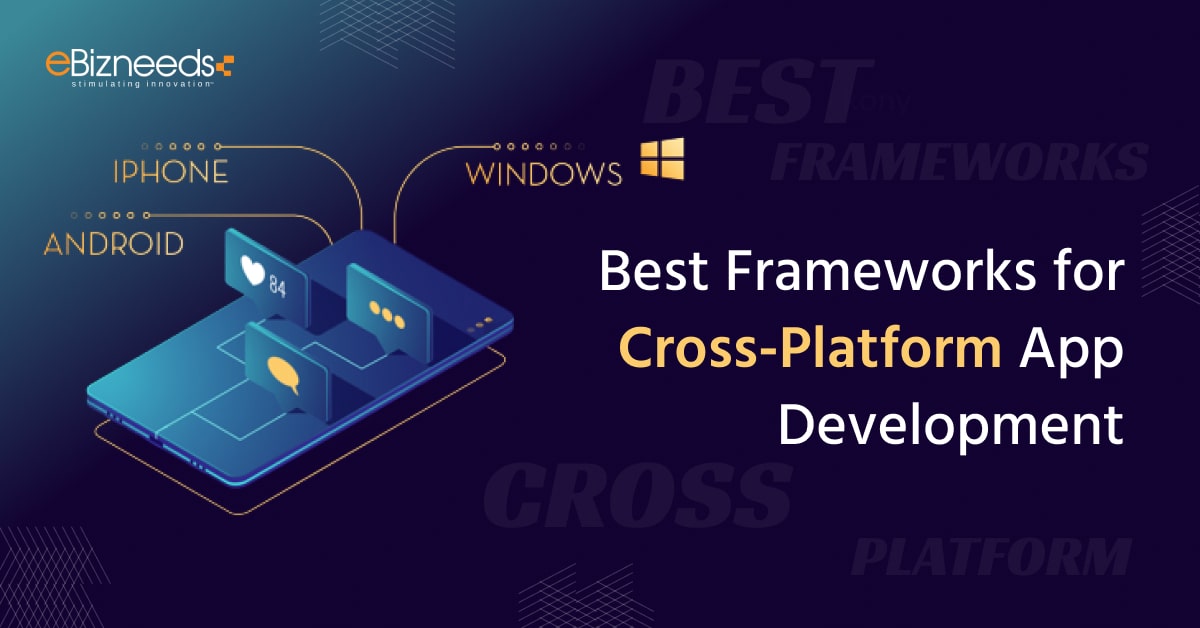Last updated on April 1st, 2024 at 05:37 am
Every company seeks to expand its audience to grow in the modern era. A cross-platform app development company can support you in achieving this by building apps. It could run on multiple channels and permitting you to get to market faster. In this blog, we have discussed cross-platform app development frameworks and the benefits of cross-platform applications. It will assist you in quickly releasing your application into the market.
Let’s explore it in further detail.
What is A Cross-platform App Framework?
Cross-platform app development refers to creating an app that can run on several operating systems and platforms.
These cross-platform or hybrid applications have a native feel and composition due to the combination of independent and native code. Developers may reuse this code by writing it just once. It is a rapid and affordable approach to developing apps.
With a single codebase, you can create hybrid applications for several platforms, including Android, Windows, and iOS, thanks to cross-platform app development frameworks.
Certain developers see native app development as an acceptable cross-platform framework. The programming language used by native applications is specific to the target operating system.
For Swift, Android, and iOS, they utilized Java and C++, as well as Objective-C and Visible Basic for Windows.
You will undoubtedly create a dedicated and fully functioning app using the Native approach. Nevertheless, we need to create a unique one for every platform. Longer development times, higher costs, and a need for varied maintenance and monitoring are all consequences.
Nevertheless, adopting the best frameworks for cross-platform app development and a single code base allows you to reach a wider audience across several platforms for less money and effort.
11 Best Frameworks for Developing Cross-Platform Mobile Apps
Software development has different steps and results based on the tool you use. To make an app that feels like it was made for the device, it is important to use the Best Frameworks for Cross-Platform App Development.
We’ve compiled a list of the 11 most popular frameworks for cross-platform mobile development. Let’s explore it.
1. React Native
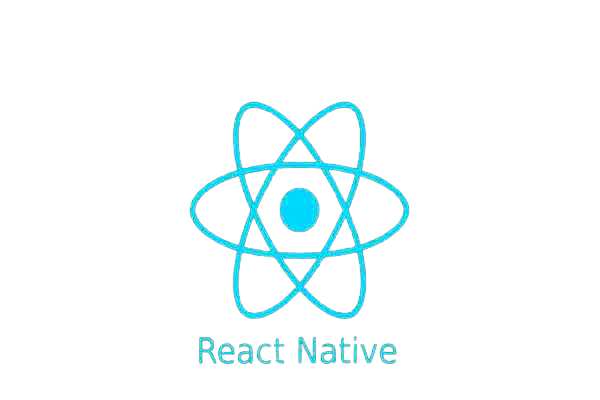

By using the JavaScript framework, the developers can create the code and link the native feeling with the app. Because of this feature, react native for a cross-platform is not only chosen by individual developers but also by large-scale mobile app development companies.
It is a leading cross-platform framework in the context of class JavaScript libraries. It is trusted internationally to develop mobile applications. The Google Play Store has different native applications.
Features of React Native
- It permits app developers to develop a one-time code for app development for iOS and Android platforms.
- The hot reloading feature enables the developers to make changes within seconds when you are using native technologies.
- It is highly well-suited to different third-party plugins like Google Maps.
- Up to 80% of a codebase could be shared across platforms, depending on the complexity of the apps. Code reusability meaningfully speeds the development procedure.
- Developers of react cross-platform can also incorporate third-party plugins for good usability.
Popular Examples
- Walmart
Also Read : Native vs. Cross-Platform App Development
2. Ionic


It is one of the cross-platform mobile development frameworks that act on AngularJS. The developers can use this framework to access native language integrations such as HTML5, CSS, Cordova wrapper, and JavaScript.
By using an ionic framework, the developers can develop a beautiful user interface and keep it simple at the same time. Moreover, Ionic achieves this goal by keeping the dynamic apps like a native.
Features of Ionic frameworks
- This cross-platform framework is developed on the SAAS UI framework.
- Ionic assists React, Angular, and Vue.
- It can be considered an HTML syntax extension because of its integration with AngularJS.
- It can access the device features with the support of the Cordova Plugins.
Popular Examples
- Calla
- Sanvello
3. Flutter
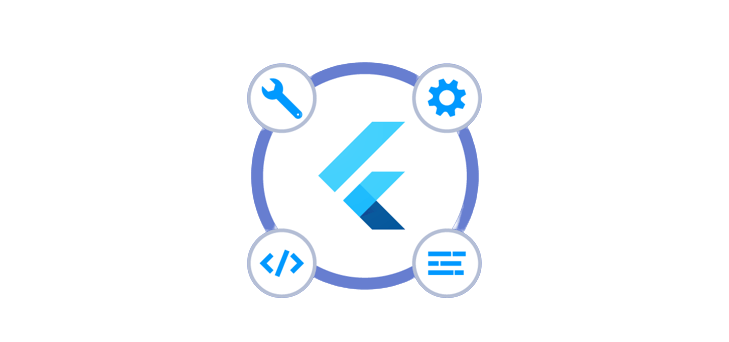

Flutter is probably the emerging mobile cross-platform framework on this entire list. This open-source app is freely available for developing iOS and Android mobile applications.
The uniform and dynamic strategy of flutter permits the apps to function on multiple platforms without any loss of performance.
Features of a flutter
- Flutter facilitates a single codebase for developing cross-platform mobile apps for multiple platforms.
- Flutter installation setup is highly simple and applied. To initiate development, mainly install the development IDE, i.e. available for all operating systems. It helps to create your project from scratch.
- Flutter has a well-developed graphics engine. It permits the developers to develop separate interfaces for iOS and Android.
Popular Examples
- BMW
- Google Pay
4. Xamarin
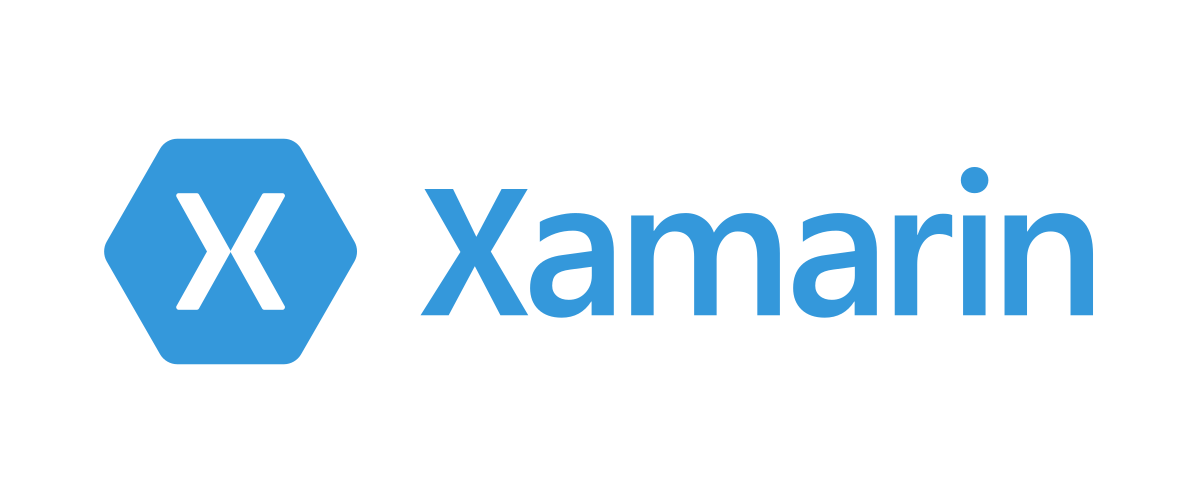

It is one of the streamlining cross-platform app development frameworks available in the existing market. The developers mainly use this framework to create iOS and Android apps. It works on C# and .NET programming languages.
Features of Xamarin
- It enables the developers to create the program on various platforms while reusing around 90% of the present code.
- It permits the developers to include C++, Java, and Objective-C libraries. Moreover, it comes with a wider category of class libraries.
- This cross-platform framework also supports the developers in eliminating any hardware compatibility concerns in the app.
- It not only improves the procedure of mobile app development but also reduces its overall cost.
Popular Examples
- Alaska Airlines
- Microsoft Studio
5. NativeScript
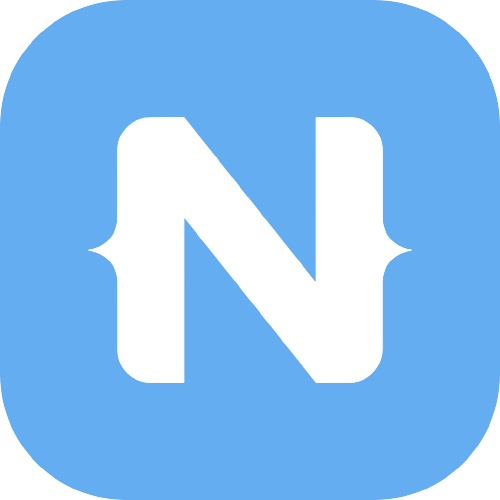

Developers who are eager to explore Write once, run anywhere (WORA) functionality can select NativeScript as their cross-platform app development framework.
When using NativeScript, the developers also have the choice to reuse the current API plugins from npm.
Features of NativeScript
- NativeScript platform induces the convenient and stunning native UI that acts as a WebViews.
- The NativeScript platform uses Angular and TypeScript for programming.
- It aids the developers in appealing to multiple local approaches from libraries.
- It also helps in segments such as CocoaPods and Android Arsenal.
Popular Examples
- Daily Nanny
- ActiveLook
6. Unity3D


Unity Technologies developed this current cross-platform game engine. Developers can utilize Unity 3D to develop AR/VR games, 2D & 3D games, and other experiences. It supports over 25 platforms, including iOS, Xbox, Linus, Android, PlayStation, Google Cardboard, and Oculus Rift.
This engine has been implemented by significant industries such as automotive, film, architecture, engineering, and video gaming. Unity has complete resources for learning to advance skills, assets to make rapid development, documentation to develop and use scripts, and support to access feasible resources at the right time.
Features of Unity3D
- It provides visual scripting. You can develop different prototypes and select the best one using this feature.
- Unity 3D allows developers to code using recognized languages such as JavaScript and C#.
- The cross-platform framework facilitates magnificent graphics with an OpenGL API that runs effectively on different platforms.
- It facilitates a better visual experience. Therefore, it is one of the best visual platforms present in the market.
- It has a better community of developers. In addition, there are different tutorials available online. Therefore, you can easily get started with Unity 3D.
Popular Examples
- Shapes 3D
- Kavtek
- 3D Bear
- Arilyn
- Forgotten Anne
7. PhoneGap


It is the best framework for Cross-Platform App development, wherein the app is developed using JavaScript, CSS, and HTML5. This framework also facilitates access to a cloud platform to perform testing procedures on the go.
Features of PhoneGap
- PhoneGap avoids the stress of maintaining a costly physical device testing lab.
- It has an interesting community of experienced developers who are always prepared to assist the newbies.
- Using the PhoneGap Framework, developers can access embedded payment services such as Google Pay and Apple Pay.
- The developers also have the liberty to use the extension in a modular strategy with the support of the plugin architecture.
Popular Examples
- TripCase
- Monaca
8. Apache Cordova


Developers may use the open-source Apache Cordova technology to create a mobile HTML application, CSS, and the JavaScript programming language. We can state that this platform acts as a bridge between web apps and mobile applications.
Features of Apache Cordova
- This cross-platform app development framework facilitates most of the key elements the developers will need to develop a functional mobile app.
- It would automatically develop the procedures and install the required plugins for different platforms.
- Using this cross-platform framework, developers can develop apps that require access to native features such as contacts, batteries, and cameras.
Popular Example
- Adobe
- Just watch
9. Sencha Touch


This cross-platform app development framework was released about a decade ago and has supported developers in building countless web-based cross-platform apps. Currently, Sencha Touch has combined with Ext JS.
Using this framework, the developers can develop efficient apps that utilize hardware acceleration methods.
Features of Sencha Touch
- The apps created with this mobile cross-platform framework are secure and properly tested. Therefore, there is no probability for any underlying glitches or bugs to interfere with the smooth experience of users.
- It has a better backend data package that allows developers to perform with the data sources effortlessly.
- It also facilitates complete compatibility among older and newer versions of an app.
Popular Examples
- Samsung
- Nvidia
10. Qt
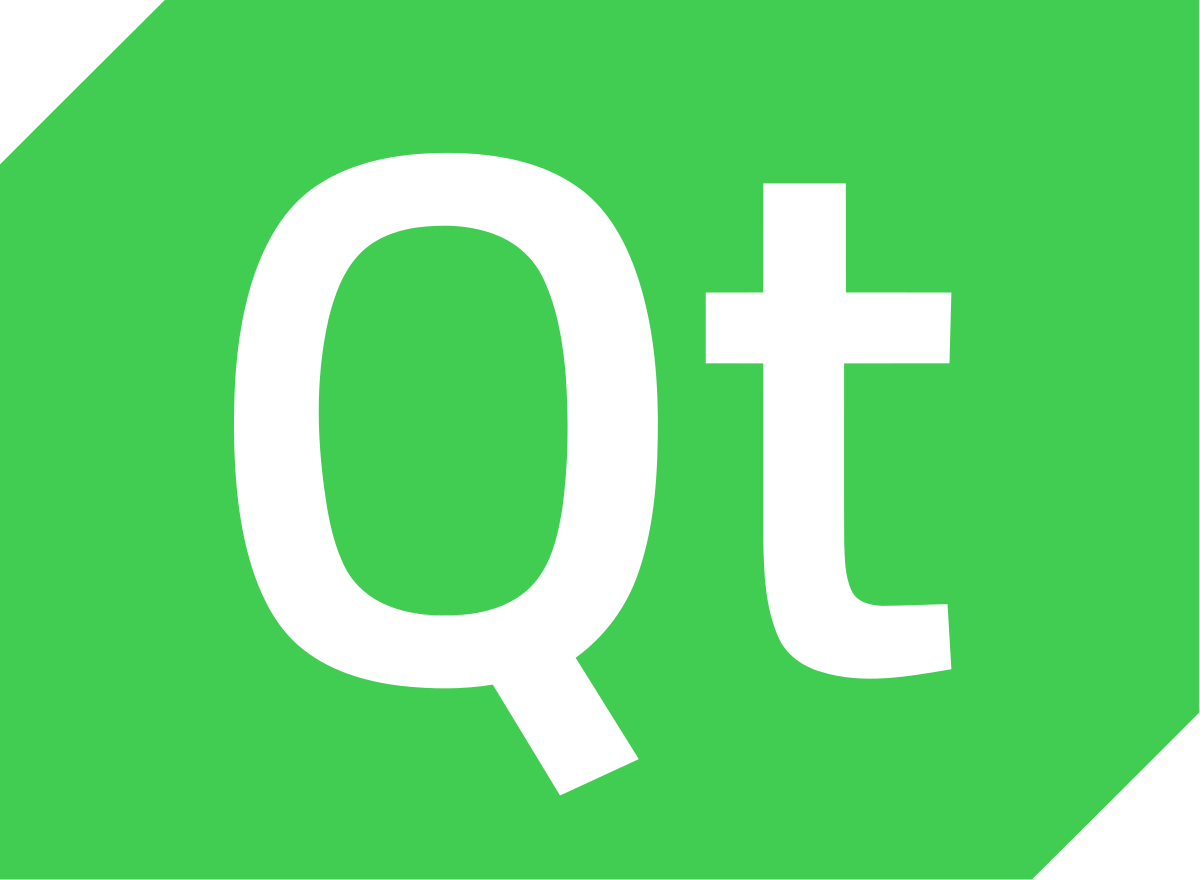

It is a free and open-source toolkit termed “cute.” The current version of this cross-platform framework is 6.2.2. It enables developers to create graphical user interfaces and cross-platform apps. They are compatible with all platforms, such as iOS, Android, and operating systems like macOS, Linus, and Windows.
Using the QT framework, you can launch an app on a distinct platform with less or no change in the codebase.
Qt facilitates the tools for the entire cycle of app development, designing tools to develop prototyping and designs, developing techniques for creating and testing the apps, and deploying the tools for launching the application on distinct platforms.
Many big brands, such as PEUGEOT, Mercedes-Benz, and LG, use Qt for their software. It is accessible under both commercial and open-source licenses.
Features of Qt
- The Best Frameworks for Cross-Platform App Development provide different designing techniques, such as Qt Shader tools and Qt Design Studio. These techniques support you in designing an attractive UI and provide better UX.
- Qt facilitates multiple development techniques like Qt Linguist, Qt creator, and CMake feasible for developing apps running smoothly across multiple platforms.
- It provides different APIs and libraries that support improving the development.
- This cross-platform app framework‘s IDE is termed Qt creator. It works efficiently on different platforms.
- Qt framework provides excellent documentation. Therefore, developers can get answers to their questions.
Popular Examples
- Calibre
- Audacious
- Dragonframe
11. Node.js
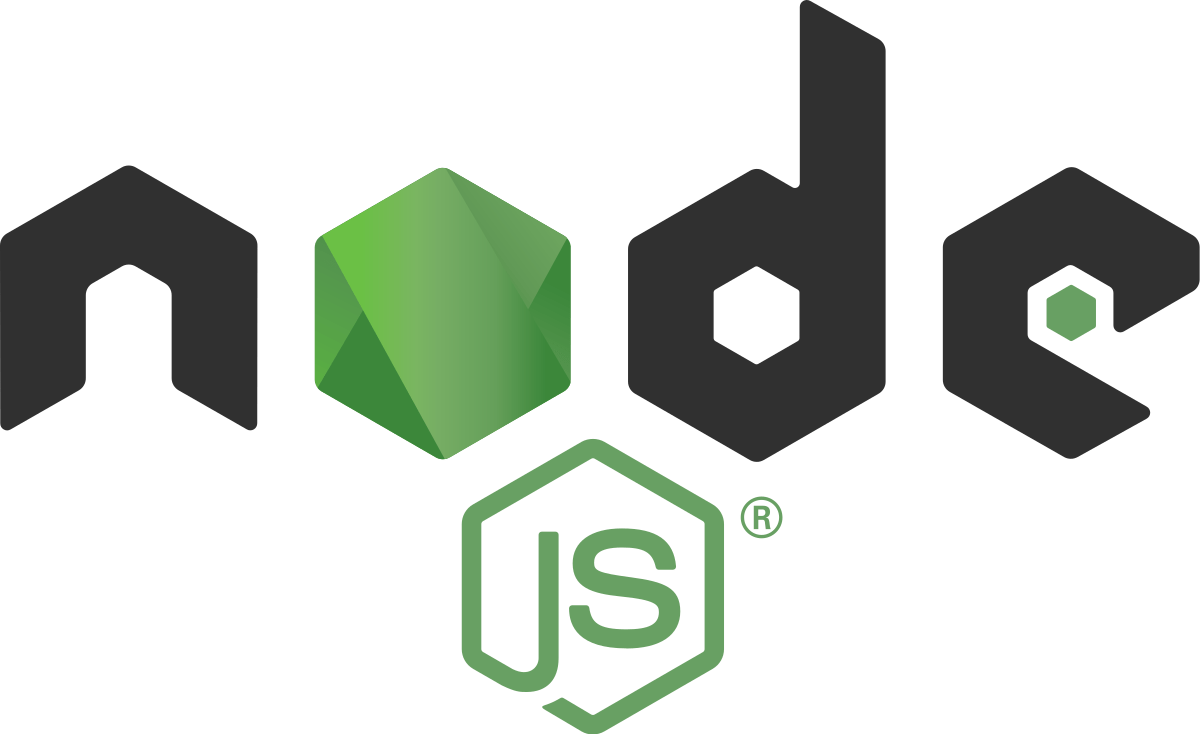

Node.js is a cross-platform app development framework that is open-source and cost-free. It is mostly used to build server-side and network applications.
Ryan Dhayal invented it in 2009. It is created on the JavaScript V8 Engine of Google. Because of its robust features and functions, it is also used by startup companies and established corporations.
Node.js has the following features
- This cross-platform framework library executes code very quickly;
- js apps output the data in parts.
- It also employs the single-threaded approach with event looping, and none of the platform’s Interfaces ever buffer data.
Popular Examples
- Netflix
- Uber
- Yahoo
- Mozilla
How to Choose the Right Framework
Many variables must be considered while selecting the best method to create cross-platform software applications. But the most crucial ones are UI Customization and the developer team’s experience.
- Vendor dependability and support
- Framework maturity
- Framework’s capabilities
- Security
Selecting the Best Frameworks for Cross-Platform App Development that matches your requirements could be tough without considering these considerations.
Benefits of Implementing Cross-Platform Mobile App Development
The cross-platform approach has a number of benefits that both programmers and project owners seem to like. So let’s look at the most important benefits:
Reduced Development Cost
App development takes less time, money, and effort when using cross-platform frameworks. It enables you to use a single codebase across many platforms that aids to achieve a solid balance between quality and cost.
Developers avoid the trouble of developing numerous apps for various platforms. They use an agile methodology to reduce the time needed for development. The greatest option to expand your app development company on many tools and platforms is to create cross-platform applications.
Reusable Code
Reusing code is the main advantage of cross-platform app development frameworks. “Write Once, Run Everywhere” is the phrase used to describe the idea. Programmers must write code once, which may be utilized on other platforms.
It reduces operating expenses and gets rid of repetitive coding. You can always add another platform without spending a lot of work on a common codebase.
Maximum Exposure to the Target Audience
An organization may create and deliver an app across several platforms, including the web, using a mobile cross-platform development method. It suggests that a single software might address both iOS and Android. Therefore, to expand their range, you can hire app developers.
Easier Maintenance & Deployment
A single and universal programme may operate on all platforms when it is developed for cross-platform use. It makes it easier to maintain and release code as changes are made. Updates can be immediately synced across all devices and platforms, saving time and money.
Moreover, a flaw found in the common codebase must only be fixed once. It might help developers to save a huge amount of time and money.
Quicker Development Process
Another win-win scenario for creating cross-platform applications is the short development process. Using a single source of code across many platforms may save development time by 50 to 80%.
The procedure makes it possible to create feature-rich business software faster. The cross-platform app development company can complete projects by the deadlines set.
Easy Integration with Cloud
Apps that work across platforms might employ a variety of plugins that are connected to cloud settings. Different plugins and extensions are coordinated with the common codebase. The app’s functionality and scalability are enhanced by this method.
Personalization and a quicker time to market
As was previously said, when creating cross-platform programmes, the idiom “write once, run everywhere” is applied. Quick deployment allows app developers to shorten their Time-to-Market (TTM).
Also, it is simple for the developers to make tiny modifications in a single code if the program has to be modified or altered. Increasing client interaction helps to provide items faster than the competition.
Uniform Design
People can identify user interface (UI) components and predict how they interact across different platforms. User Experience (UX) is crucial while developing any product or app.
In creating several applications, it might be challenging to coordinate the many development projects. With cross-platform mobile development tools, designers and developers can create a unified user experience for app users.
The Final Verdict
Cross-platform app development frameworks have made combining ease with quality easier for an app development company. These app development frameworks aim to advance universal interoperability while upholding an application’s financial viability.
To choose the best frameworks for Cross-Platform App Development, the developers must evaluate the demands of the development project and the business requirements. As a developer, you must always remember that maintaining the highest possible level of client happiness is your major priority.
FAQs
How to Choose A Cross-Platform Framework?
The programming language you want to use and the platforms you want to target will determine your chosen cross-platform framework.
What is the Most Used Cross-Platform Mobile Development in 2023?
The most well-known brands in the cross-platform app development sector in 2023 are React Native and Flutter.
What is a Cross-Platform App?
Apps that can operate perfectly regardless of the operating system or device requirements are said to be cross-platform.
What Are a Few Cross-Platform App Examples?
Some examples of cross-platform applications include Facebook, PayPal, Instagram, and others.
Is Cross-Platform Frameworks Free?
You may create applications for using one of the numerous open-source, cross-platform frameworks available, such as flutter.



Naveen Khanna is the CEO of eBizneeds, a company renowned for its bespoke web and mobile app development. By delivering high-end modern solutions all over the globe, Naveen takes pleasure in sharing his rich experiences and views on emerging technological trends. He has worked in many domains, from education, entertainment, banking, manufacturing, healthcare, and real estate, sharing rich experience in delivering innovative solutions.
